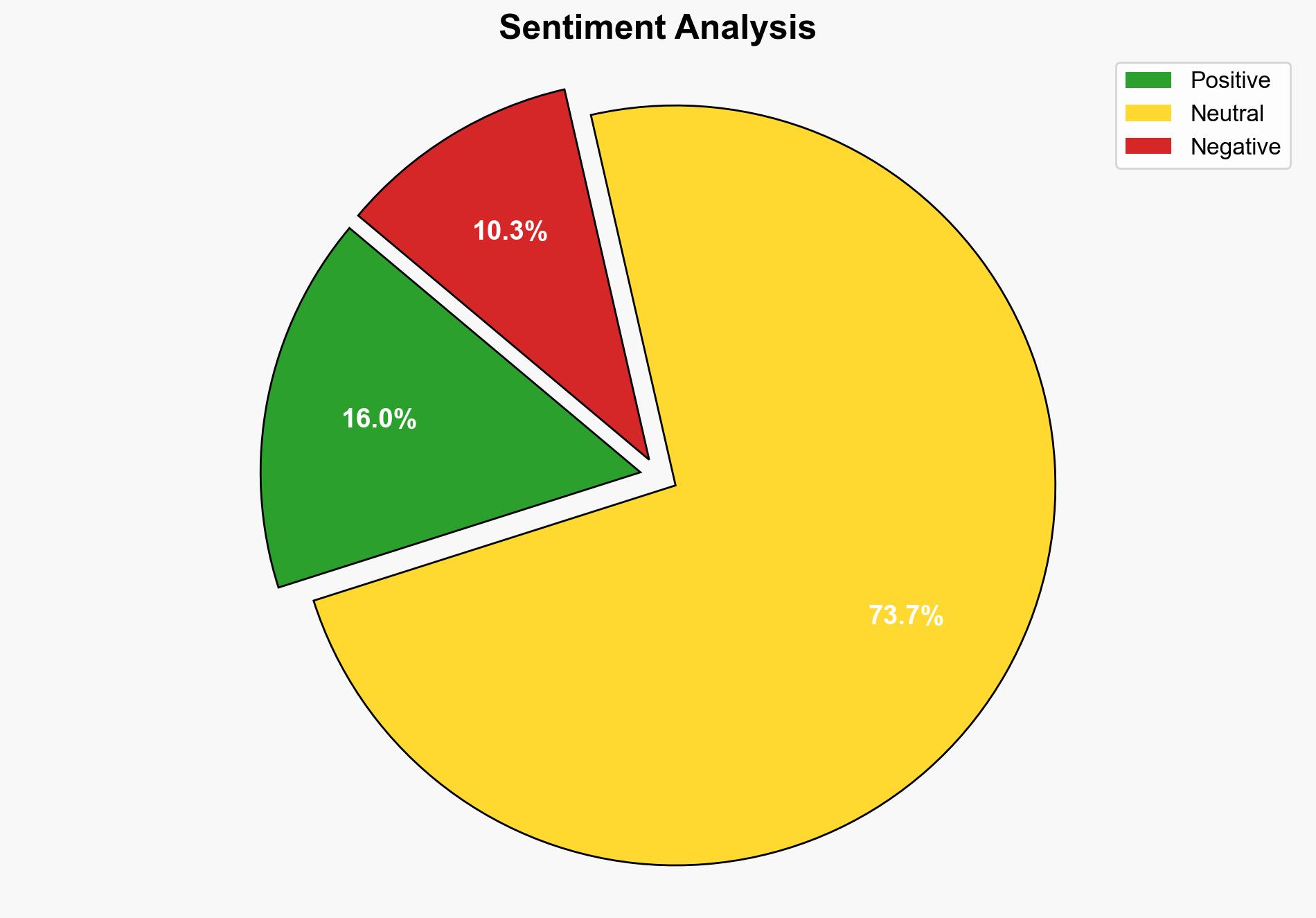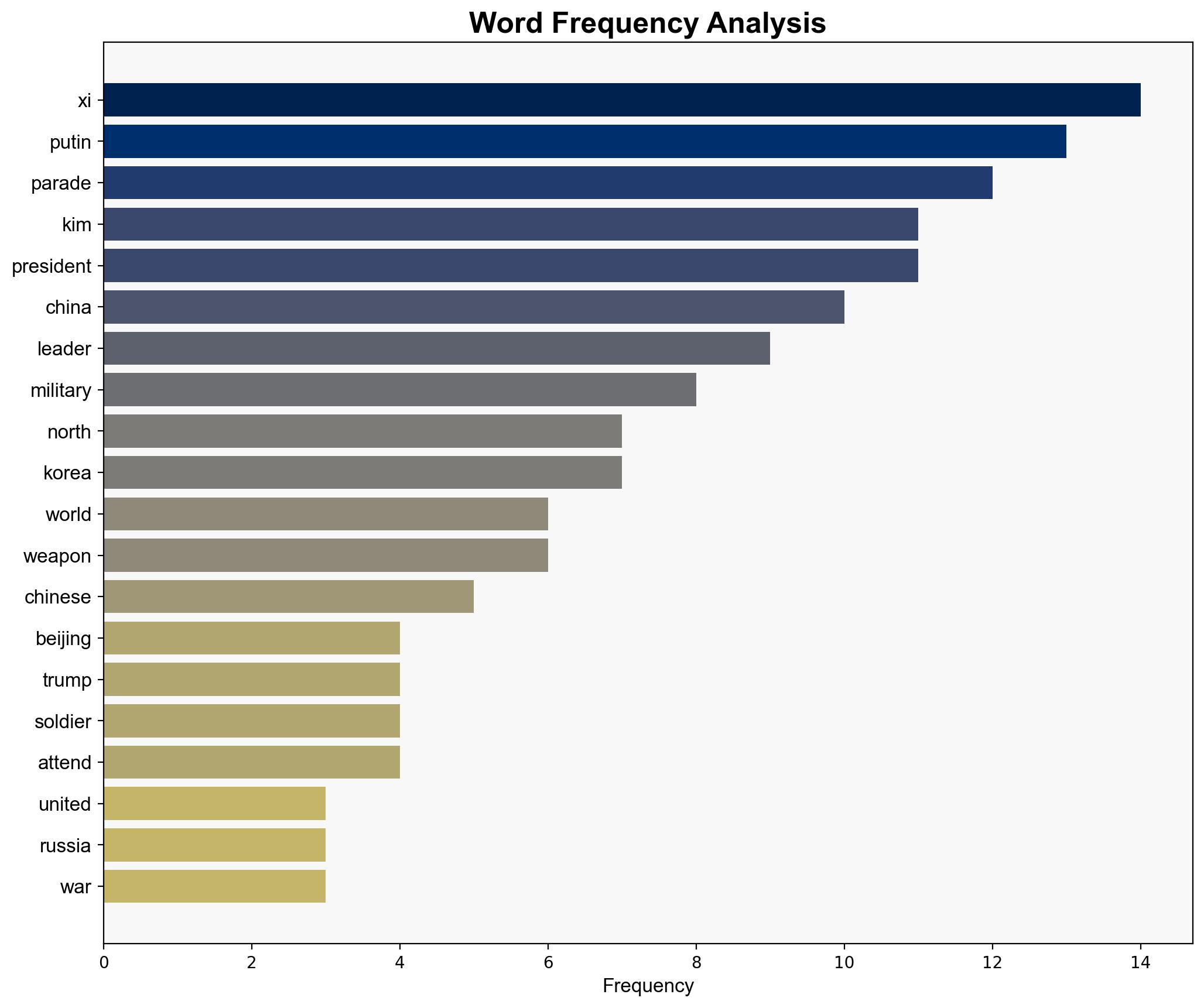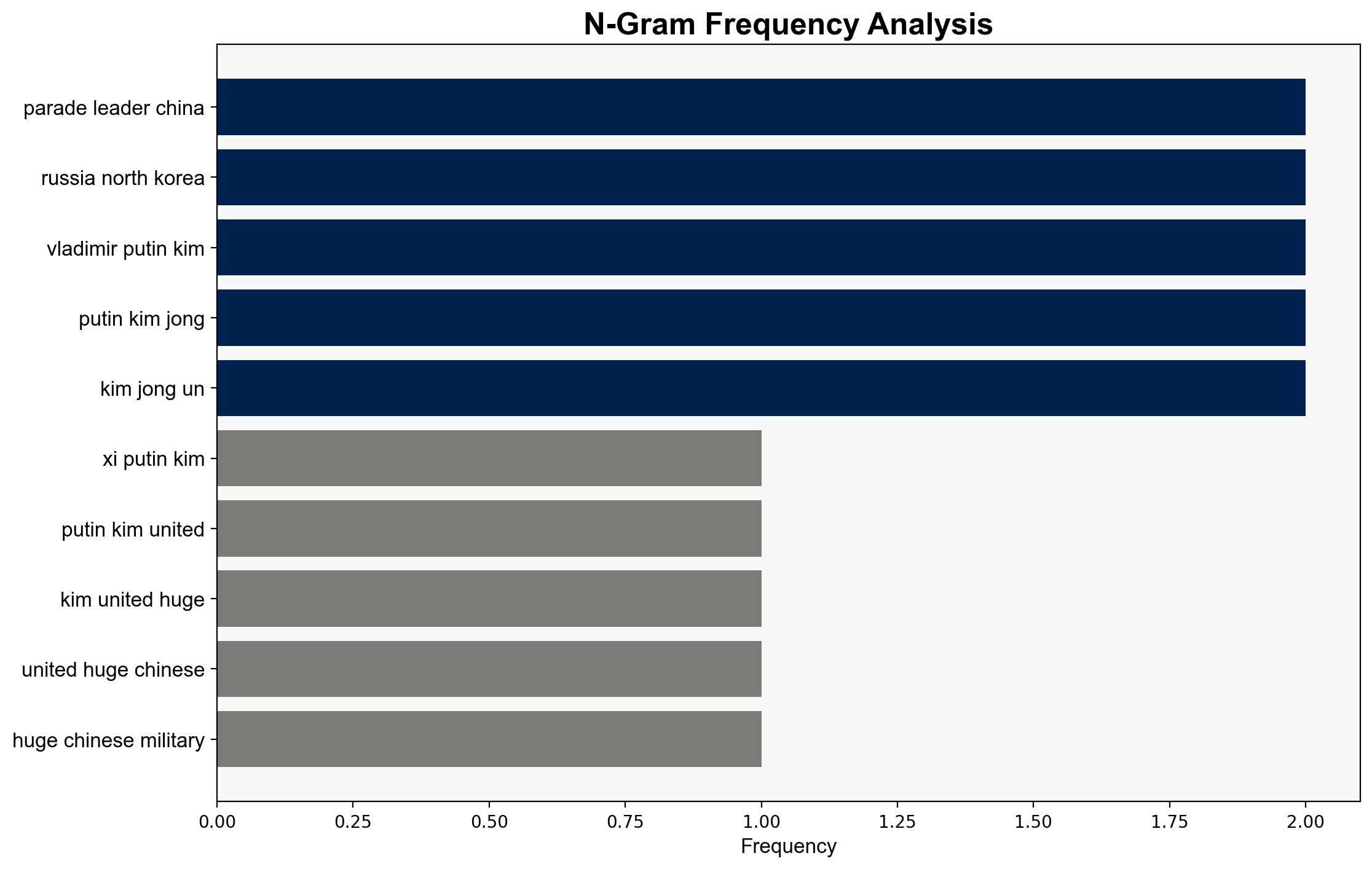Xi Putin and Kim show united front at huge Chinese military parade – BBC News
Published on: 2025-09-03
Intelligence Report: Xi Putin and Kim show united front at huge Chinese military parade – BBC News
1. BLUF (Bottom Line Up Front)
The most supported hypothesis is that the military parade in Beijing serves as a strategic demonstration of solidarity among China, Russia, and North Korea, aimed at countering Western influence and showcasing military prowess. Confidence level: Moderate. Recommended action: Enhance diplomatic engagement with regional allies to counterbalance this trilateral alignment and monitor military developments closely.
2. Competing Hypotheses
1. **Hypothesis A**: The parade is primarily a display of military strength and unity among China, Russia, and North Korea to deter Western intervention and assert dominance in global geopolitics.
2. **Hypothesis B**: The event is a symbolic gesture with limited strategic intent, primarily aimed at domestic audiences to bolster national pride and distract from internal challenges.
Using the Analysis of Competing Hypotheses (ACH) 2.0, Hypothesis A is better supported due to the presence of high-profile leaders and the emphasis on new military technologies, suggesting a coordinated message of power projection.
3. Key Assumptions and Red Flags
– **Assumptions**: It is assumed that the presence of Xi Jinping, Vladimir Putin, and Kim Jong Un signifies a unified strategic front. Another assumption is that the display of advanced weaponry is intended to signal military readiness.
– **Red Flags**: The absence of other significant global leaders, such as from South Korea and India, raises questions about the true extent of international support for China. Additionally, the lack of direct evidence linking the parade to specific military plans introduces uncertainty.
4. Implications and Strategic Risks
The parade could escalate regional tensions, prompting increased military readiness among neighboring countries. The potential for misinterpretation of military intentions may lead to heightened geopolitical instability. Economically, the display may signal a shift towards increased defense spending, impacting global markets. Cyber threats could also rise as these nations potentially collaborate on technological advancements.
5. Recommendations and Outlook
- Strengthen alliances with regional partners to ensure a balanced power dynamic.
- Increase intelligence gathering on military developments in China, Russia, and North Korea.
- Scenario-based projections:
- Best: Diplomatic negotiations lead to reduced tensions and increased transparency.
- Worst: Military posturing leads to an arms race and potential conflict.
- Most Likely: Continued strategic posturing with periodic diplomatic engagements.
6. Key Individuals and Entities
– Xi Jinping
– Vladimir Putin
– Kim Jong Un
– Donald Trump (mentioned in context of accusations)
7. Thematic Tags
national security threats, military alliances, geopolitical strategy, regional focus




